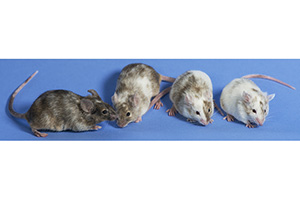A recent article published in LaboratoryEquipment.com features Taconic Biosciences's Product Manager Jennifer Phelan and the topic of lab animal health standards. "Fifty years ago, the chief concern about a lab animal's health was the presence of infectious disease," writes Phelan. She continues to state that current concerns for lab animal health are instead focused on defining health standards for barriers and keeping these standards consistent across all facilities. Additionally, new research is regularly published on the harmful or beneficial nature of specific bacteria. Therefore, keeping up to date on new studies is essential for maintaining laboratory animals at known, appropriate health standards:
 "In the 1960s, lab animal health primarily focused on viral infection, with gnotobiotic derivation used to rid the animal of viruses and clear the way for breeding a study cohort. Over time investigators came to realize that viral infections were but one factor, and that even gnotobiotically derived animals could be infected with opportunistic bacteria and other organisms capable of affecting a study outcome.
"In the 1960s, lab animal health primarily focused on viral infection, with gnotobiotic derivation used to rid the animal of viruses and clear the way for breeding a study cohort. Over time investigators came to realize that viral infections were but one factor, and that even gnotobiotically derived animals could be infected with opportunistic bacteria and other organisms capable of affecting a study outcome.
Concurrently, as the use of immune-compromised animal models has increased--in part to support a surge in immuno-oncology research--so has the risk of contamination by various agents. The more immune-compromised the animal, the more susceptible and less tolerant it is of opportunistic organisms and confounders that can alter immune response and impact a study's outcome.
At the same time, growing interest in the role of the microbiome on disease development, progression and treatment has emerged as a relatively new factor affecting animal health standards, fueling greater demand for the most restrictive health statuses." Read the complete article at: laboratoryequipment.com
 "In the 1960s, lab animal health primarily focused on viral infection, with gnotobiotic derivation used to rid the animal of viruses and clear the way for breeding a study cohort. Over time investigators came to realize that viral infections were but one factor, and that even gnotobiotically derived animals could be infected with opportunistic bacteria and other organisms capable of affecting a study outcome.
"In the 1960s, lab animal health primarily focused on viral infection, with gnotobiotic derivation used to rid the animal of viruses and clear the way for breeding a study cohort. Over time investigators came to realize that viral infections were but one factor, and that even gnotobiotically derived animals could be infected with opportunistic bacteria and other organisms capable of affecting a study outcome. Concurrently, as the use of immune-compromised animal models has increased--in part to support a surge in immuno-oncology research--so has the risk of contamination by various agents. The more immune-compromised the animal, the more susceptible and less tolerant it is of opportunistic organisms and confounders that can alter immune response and impact a study's outcome.
At the same time, growing interest in the role of the microbiome on disease development, progression and treatment has emerged as a relatively new factor affecting animal health standards, fueling greater demand for the most restrictive health statuses."
















.jpg)

.jpg)
.jpg)
.jpg)
.jpg)





.jpg)


.jpg)
.jpg)




.jpg)




.jpg)

.jpg)


